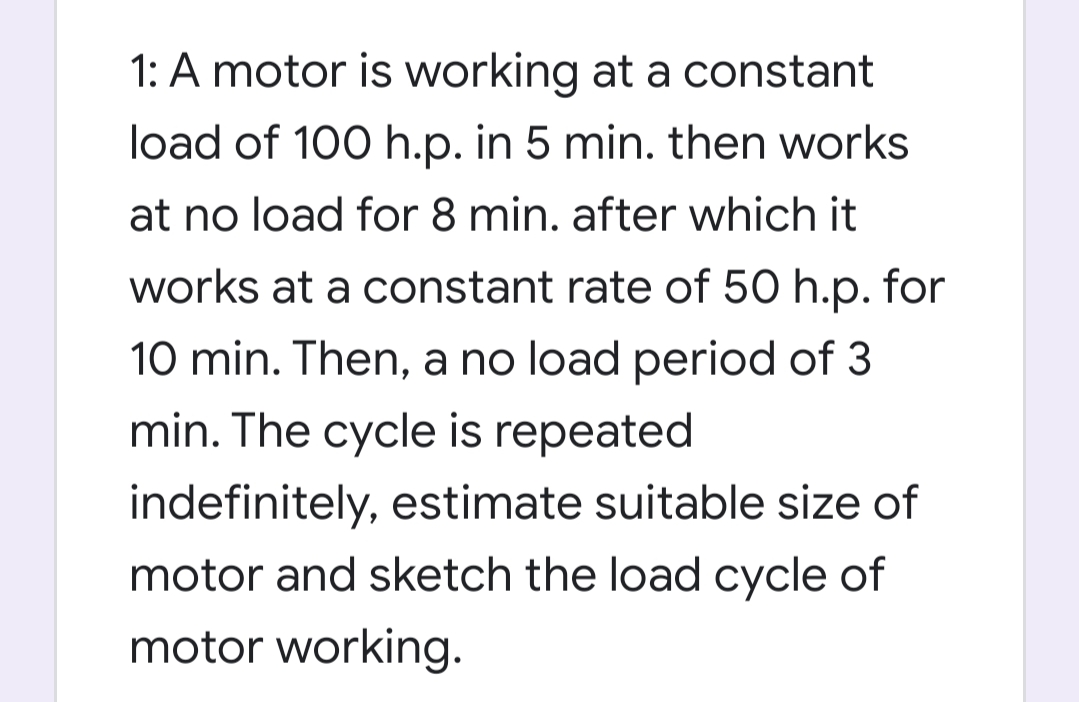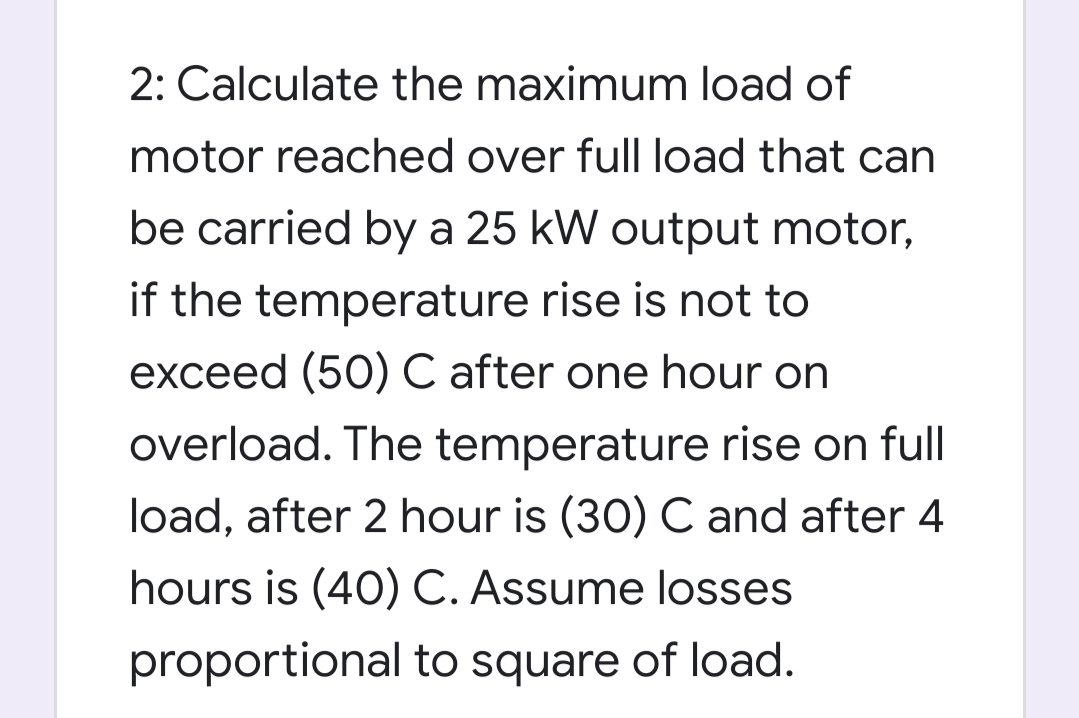1: A motor is working at a constant load of 100 h.p. in 5 min. then works at no load for 8 min. after which it works at a constant rate of 50 h.p. for 10 min. Then, a no load period of 3 min. The cycle is repeated indefinitely, estimate suitable size of motor and sketch the load cycle of motor working.
1: A motor is working at a constant load of 100 h.p. in 5 min. then works at no load for 8 min. after which it works at a constant rate of 50 h.p. for 10 min. Then, a no load period of 3 min. The cycle is repeated indefinitely, estimate suitable size of motor and sketch the load cycle of motor working.
Introductory Circuit Analysis (13th Edition)
13th Edition
ISBN:9780133923605
Author:Robert L. Boylestad
Publisher:Robert L. Boylestad
Chapter1: Introduction
Section: Chapter Questions
Problem 1P: Visit your local library (at school or home) and describe the extent to which it provides literature...
Related questions
Question

Transcribed Image Text:1: A motor is working at a constant
load of 100 h.p. in 5 min. then works
at no load for 8 min. after which it
works at a constant rate of 50 h.p. for
10 min. Then, a no load period of 3
min. The cycle is repeated
indefinitely, estimate suitable size of
motor and sketch the load cycle of
motor working.

Transcribed Image Text:2: Calculate the maximum load of
motor reached over full load that can
be carried by a 25 kW output motor,
if the temperature rise is not to
exceed (50) C after one hour on
overload. The temperature rise on full
load, after 2 hour is (30) C and after 4
hours is (40) C. Assume losses
proportional to square of load.
Expert Solution
This question has been solved!
Explore an expertly crafted, step-by-step solution for a thorough understanding of key concepts.
Step by step
Solved in 2 steps with 2 images

Knowledge Booster
Learn more about
Need a deep-dive on the concept behind this application? Look no further. Learn more about this topic, electrical-engineering and related others by exploring similar questions and additional content below.Recommended textbooks for you

Introductory Circuit Analysis (13th Edition)
Electrical Engineering
ISBN:
9780133923605
Author:
Robert L. Boylestad
Publisher:
PEARSON

Delmar's Standard Textbook Of Electricity
Electrical Engineering
ISBN:
9781337900348
Author:
Stephen L. Herman
Publisher:
Cengage Learning

Programmable Logic Controllers
Electrical Engineering
ISBN:
9780073373843
Author:
Frank D. Petruzella
Publisher:
McGraw-Hill Education

Introductory Circuit Analysis (13th Edition)
Electrical Engineering
ISBN:
9780133923605
Author:
Robert L. Boylestad
Publisher:
PEARSON

Delmar's Standard Textbook Of Electricity
Electrical Engineering
ISBN:
9781337900348
Author:
Stephen L. Herman
Publisher:
Cengage Learning

Programmable Logic Controllers
Electrical Engineering
ISBN:
9780073373843
Author:
Frank D. Petruzella
Publisher:
McGraw-Hill Education

Fundamentals of Electric Circuits
Electrical Engineering
ISBN:
9780078028229
Author:
Charles K Alexander, Matthew Sadiku
Publisher:
McGraw-Hill Education

Electric Circuits. (11th Edition)
Electrical Engineering
ISBN:
9780134746968
Author:
James W. Nilsson, Susan Riedel
Publisher:
PEARSON

Engineering Electromagnetics
Electrical Engineering
ISBN:
9780078028151
Author:
Hayt, William H. (william Hart), Jr, BUCK, John A.
Publisher:
Mcgraw-hill Education,